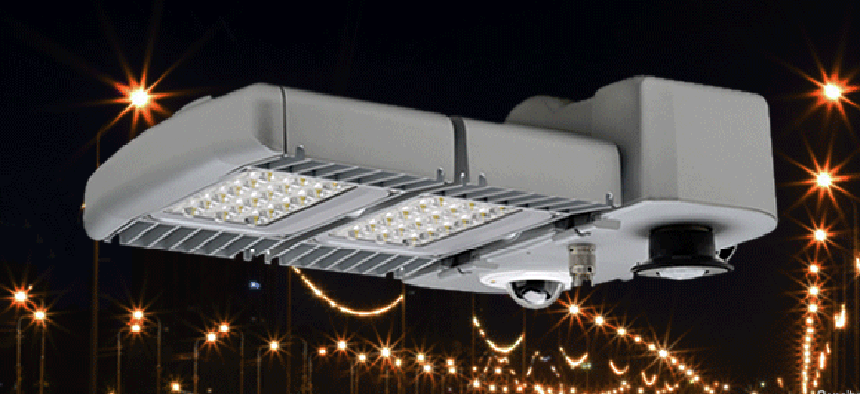LEDs light the way… and collect city data


Connecting state and local government leaders
Sensors in LED streetlights can track power consumption, temperature, movement of the fixture, vibrations and ambient light – a data bonanza for cities.
There’s been a lot of talk recently about the Internet of Things and deploying integrated urban sensor networks to monitor weather and pollution, traffic and infrastructure as well as to provide security. And while the technology is there to make such dreams come true, there has been one major snag: Most cities are too cashpoor to be installing expensive sensor networks.
There may, however, be a way to clear that hurdle.
“Many cities do have line items for lighting, and sometimes a budget item for handling conversions to LED,” said Hugh Martin, CEO of Sensity Systems, a California-based manufacturer of smart LED systems.
In fact, Sensity Systems’s original business was converting standard streetlamps and other lighting fixtures to LEDs, which many municipalities were moving to in order to take advantage of LEDs’ longer life and lower cost. An LED streetlight consumes only about 30 percent as much energy as a standard light.
The thing is, as Martin’s company realized, the LEDs they were retrofitting have a lot in common with computers. “Each of these LEDs are semiconductor devices,” Martin said. As such, they could serve as a platform for a variety of sensors.
The beauty of the idea is that cities that have budgeted to retrofit LEDs would have to spend very little extra to gain the advantages of adding sensors.
“If you look at the total cost breakdown of installing a sensor network, the No. 1 cost would be the labor to install it,” Martin said. “The No. 2 cost would be the housing and the No. 3 cost would be the power supply. In fact the three most expensive items in building a sensor network already are already paid for if you combine the sensor network with the light fixtures. That’s what we’re doing.”
A basic Sensity installation includes sensors to track power consumption, temperature, movement of the fixture, vibrations, movement below the fixture and ambient light. The company’s higher-end systems include up to two imaging sensors and a microphone.
What can that data offer cities?
According to Martin, in addition to the obvious applications of monitoring weather and traffic and providing security, developers are putting the data to new uses every day. By measuring ambient light, for example, the city can save money by having lights switch on only when they are needed. Movement sensors could be used to note when parking spaces are open and feed that data to consumers.
Some developers have suggested using accelerometers to measure earthquakes. And Martin said that a city engineer suggested using video feeds to measure accumulating snowfall and to send alerts so that snowplow dispatches could be scheduled.
Whatever sensors are included, Sensity LED systems include 5 GHz Wi-Fi radios for transmitting the data wirelessly.
“Instead of having the individual nodes or sensors polled, we actually gather that information all the time in real time and store it in the cloud,” Martin said. “We have written an API so anybody can write an application to make use of that information. Where it is really going will be dependent most on the myriad of applications that are developed, so the most important thing by far is the API.”
And just to ensure future connectivity, the LED devices include a PoE (power over Ethernet) port, which could be used for such purposes as powering a higher-resolution videocamera and a CAN bus interface, which can be used to wire in other sensors.




